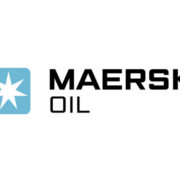Maersk Oil – Engineering a unique solution
Submitted by Maersk Oil
Impact
Replacing the buoyancy modules on a live riser system has never successfully been completed before. The Maersk Oil team met this challenge head on and developed an innovative solution, avoiding the need to replace the riser completely. The project only took around two and a half weeks and cost around 16% of the average fee of replacing a riser. Throughout, there was no production loss and no need for diving personnel, reducing the risk to human life.
Description of Best Practice
Replacing the buoyancy modules on a live riser system has never successfully been completed before. The Maersk Oil team met this challenge head on.
Rather than replacing the whole riser, an extremely time consuming, expensive and risky operation, the team sought an alternative way to correct the slippage. A rough concept was put to the supply chain: we wanted to fix the problem in a targeted manner using an ROV, allowing us to move away from conducting saturation diving operations for repair or replacement. This also allowed the team to engineer a solution which could be implemented whilst in operation.
In collaboration with SubC Partner, inventor and owner of the technical solution, a bespoke tool was created over six months which connected to a ROV. As EPCI contractor, SUBC Partner’s was responsible for: conceptual/detailed engineering; construction of subsea and support tools; supply of vessel/ROV; supply of manpower and project management.
The tool had to be specially developed for the task because there were a number of specific requirements: it had to work underwater whilst connected to the ROV, dock onto the riser and remove the old buoyancy module and inner clamp from the riser. Then bring the old parts to the surface, pick up the new clamp and module and go back down to the riser to install the new parts. Furthermore, the new clamp was installed with rubber compliant pads to stop future slippage; a technique already effectively used by Maersk Oil.
In the end, the team found an innovative solution to a complex issue, avoiding the need to replace the whole riser, the only other viable option: the project only took around 2 and a half weeks and cost around 16% of the average fee of replacing a riser. Throughout, there was no production loss and no need for diving personnel, reducing risk to human life.
Contact: Danielle O’Donnell
danielle.odonnell@maerskoil.com



